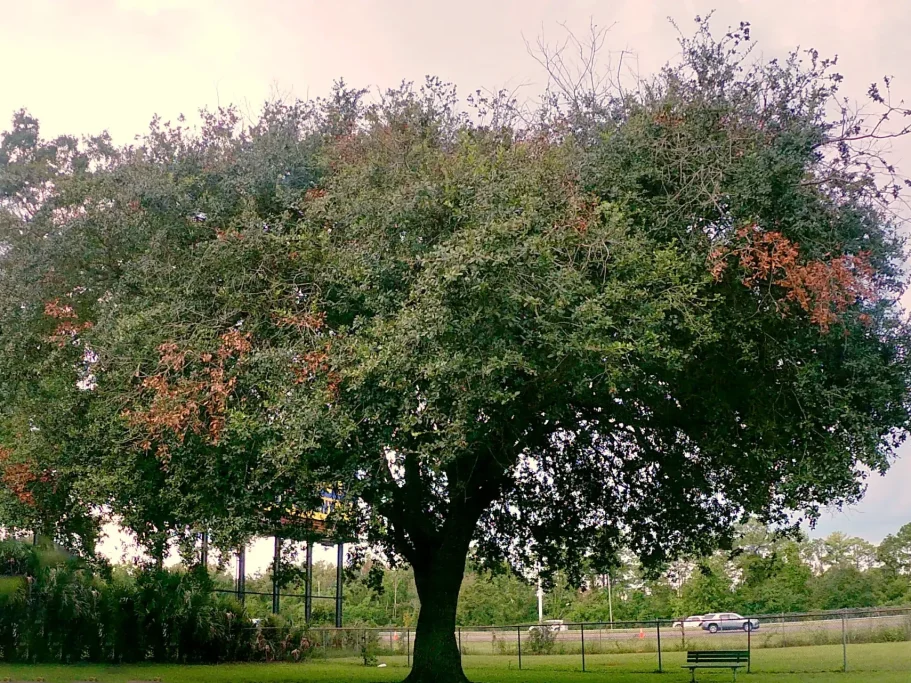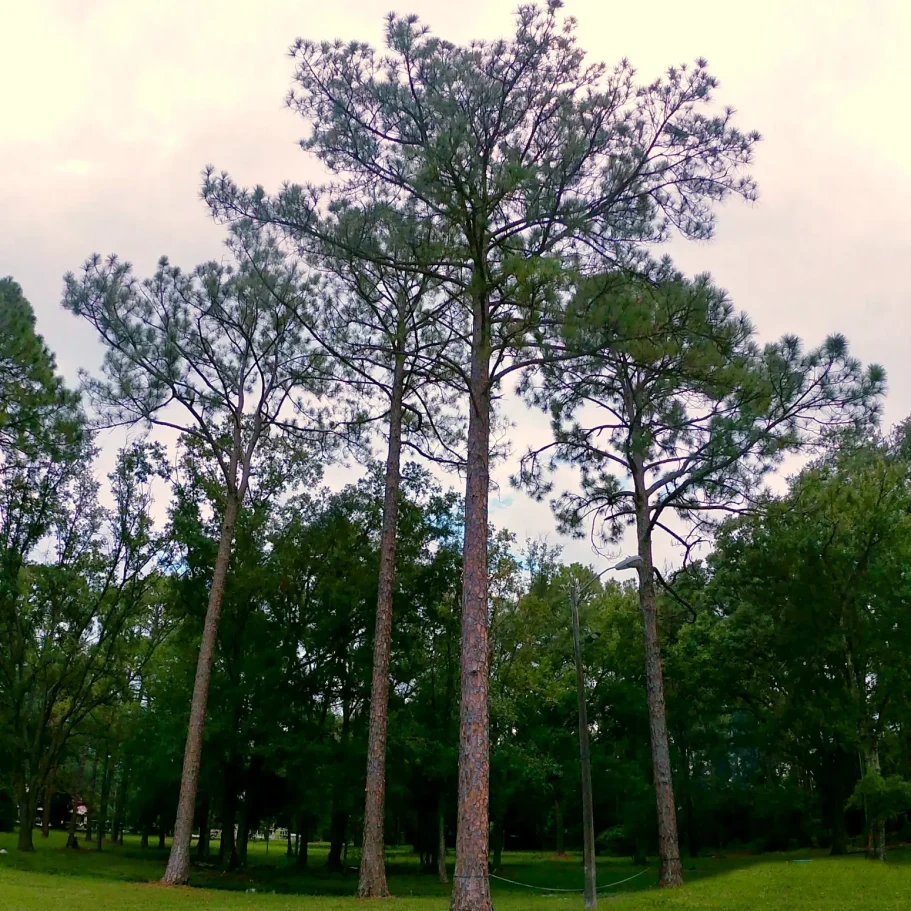Florida’s Iconic Trees and Plants: A Guide to Palm, Oak, Pine and Elm Species And More
Florida’s diverse landscapes are graced with an array of iconic trees and palms, each contributing to the state’s unique beauty and ecological richness. From the towering oaks that provide shade and shelter to wildlife, to the stately palms that sway gracefully in the coastal breeze, these plants are integral to Florida’s environment and culture. Whether you’re planning a new landscape or simply want to learn more about the flora around you, understanding these trees and palms can deepen your appreciation for the natural beauty that surrounds us. Here, we delve into the characteristics, benefits, and care tips for some of Florida’s most beloved plant species.

Palm
Palms in Florida are generally recognized for their unique characteristics and adaptability to the state's diverse climates:
- Cold-Hardy Palms: These palms can withstand colder temperatures, making them ideal for the northern regions of Florida where winters can be more severe. Their resilience to frost allows them to thrive where other tropical palms might struggle.
- Tropical Palms: More suited to Florida’s southern regions, these palms prefer the warmth and humidity of tropical climates. They are typically less tolerant of cold and may require special care or protection during colder months.

Oak Tree
Oaks in Florida are generally divided into two main categories: White Oaks and Red Oaks.
- White Oaks: Known as “annual oaks,” they drop their acorns the same year they form. Their leaves are typically rounder, and their acorns have lower tannin content, making them more palatable to wildlife and humans. White oaks are generally longer-lived and more decay-resistant.
- Red Oaks: These “biennial oaks” drop their acorns the year after they form. Their leaves are usually pointed or have fine bristles. While their acorns are consumed by wildlife, they are often a second choice due to higher tannin content.

Pine Tree
Pines in Florida are classified based on their growth characteristics and ecological adaptability
- Longleaf Pines: These iconic pines are known for their long needles and thick bark, which makes them highly resistant to fire. Longleaf pines thrive in well-drained, sandy soils and are commonly found in the northern and central parts of Florida. They play a crucial role in the ecosystem, supporting diverse wildlife.
- Slash Pines: Slash pines are fast-growing and commonly found in wetlands or areas with poorly drained soils. They have shorter needles compared to longleaf pines and are frequently used in reforestation efforts and for timber production. These pines are more adaptable to Florida's subtropical climate, making them a common sight across the state.

Magnolia Tree
Magnolias in Florida offer distinctive beauty and varied characteristics.
- Southern Magnolias: Known for their large, glossy evergreen leaves and fragrant white flowers, southern magnolias (Magnolia grandiflora) provide year-round appeal. Their flowers bloom in late spring to summer and are followed by cone-like fruiting structures.
- Sweetbay Magnolias: These magnolias (Magnolia virginiana) are valued for their smaller size and adaptability to wet soils. They have aromatic white or cream-colored flowers that appear in late spring to summer and emit a pleasant fragrance.
- Cucumber Magnolias: Noted for their unique fruit resembling cucumbers, cucumber magnolias (Magnolia acuminata) have large, greenish-yellow flowers that bloom in early summer. They are deciduous, providing beautiful fall foliage before shedding their leaves.
Each type of magnolia offers distinct features, from evergreen foliage and fragrant blooms to unique fruiting structures, making them an attractive choice for a variety of landscape settings in Florida.

Elm
Elms in Florida are valued for their shade and architectural beauty but require careful consideration for successful planting and maintenance.
- American Elm: The American elm (Ulmus americana) is known for its graceful, arching branches and large canopy, making it a popular choice for shade. It has a distinctive serrated leaf edge and produces small, winged seeds. Be mindful of its susceptibility to Dutch elm disease, though it is not currently a concern in Florida.
- Chinese Elm: The Chinese elm (Ulmus parvifolia) is more tolerant of urban conditions and has a more compact growth habit compared to the American elm. It features small, serrated leaves and a distinctive, mottled bark. It is often chosen for its resilience and adaptability.
- Slippery Elm: The slippery elm (Ulmus rubra) has a rough, dark bark and produces larger leaves with a distinctive texture. It is less common in Florida but can be found in some specialized landscapes.
Elms generally require a regular pruning schedule to develop a strong structure and minimize the risk of storm damage. They grow best in full sun or light shade and can have extensive, shallow root systems that may affect nearby surfaces.

Sycamore
Sycamore trees in Florida are known for their distinctive appearance and ecological benefits.
- American Sycamore: The American sycamore (Platanus occidentalis) is notable for its large size and striking bark. It has broad, maple-like leaves and exfoliating bark that peels away in patches to reveal a smooth, pale underlayer. The tree produces spherical clusters of fruits that are visible throughout the winter.
- Florida Sycamore: A regional variation of the American sycamore, the Florida sycamore (Platanus occidentalis var. floridana) shares many characteristics with its northern counterpart but is adapted to Florida’s climate. It is also known for its large leaves and unique bark texture.
Sycamores are appreciated for their large, spreading canopies that provide ample shade. They are well-suited to a variety of soil types and are commonly used in urban landscapes for their aesthetic and environmental benefits.

Crape Myrtle
Crape Myrtles in Florida can be appreciated for their stunning blooms and vibrant seasonal interest.
- Crape Myrtles: Known for their long-lasting summer flowers, crape myrtles come in a variety of colors, including white, pink, red, and purple. They also offer attractive fall foliage that turns yellow, orange, or red.
- Flowering: Crape myrtles produce beautiful clusters of flowers during the summer months, which can last for several weeks. The blooms are a standout feature of this plant, providing color and visual interest in the landscape.
- Foliage: In addition to their flowers, crape myrtles offer seasonal interest with their smooth, peeling bark and colorful autumn leaves. The leaves turn vibrant shades of yellow, orange, or red in the fall, adding to the plant's overall appeal.
- Growth Habit: Depending on the variety, crape myrtles can range in size from 3 to 30 feet tall. They have an upright, vase-like shape and can be grown as either multi-stemmed shrubs or trained to a single trunk.
We need your consent to load the translations
We use a third-party service to translate the website content that may collect data about your activity. Please review the details in the privacy policy and accept the service to view the translations.

